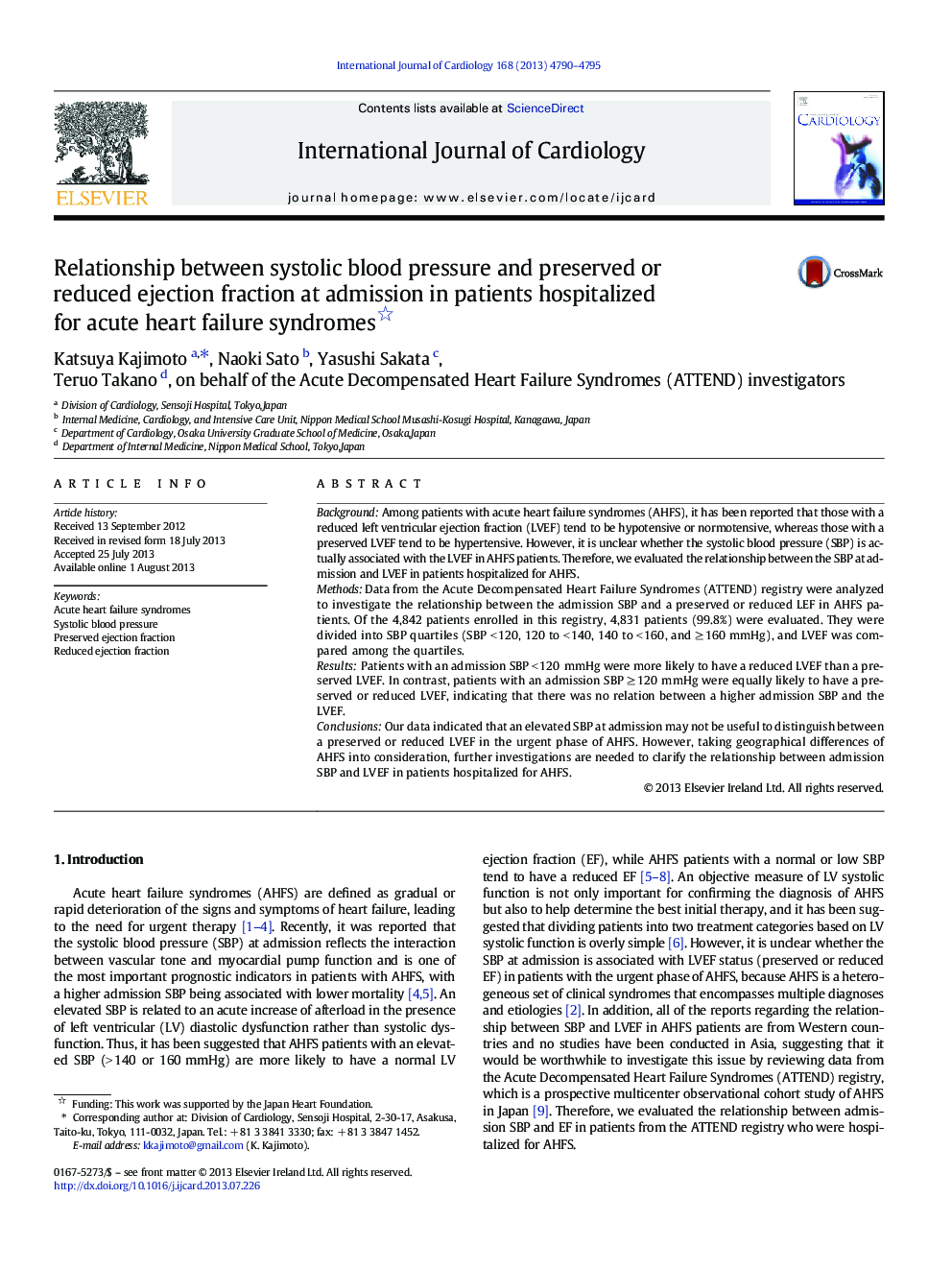| Article ID | Journal | Published Year | Pages | File Type |
|---|---|---|---|---|
| 5973373 | International Journal of Cardiology | 2013 | 6 Pages |
BackgroundAmong patients with acute heart failure syndromes (AHFS), it has been reported that those with a reduced left ventricular ejection fraction (LVEF) tend to be hypotensive or normotensive, whereas those with a preserved LVEF tend to be hypertensive. However, it is unclear whether the systolic blood pressure (SBP) is actually associated with the LVEF in AHFS patients. Therefore, we evaluated the relationship between the SBP at admission and LVEF in patients hospitalized for AHFS.MethodsData from the Acute Decompensated Heart Failure Syndromes (ATTEND) registry were analyzed to investigate the relationship between the admission SBP and a preserved or reduced LEF in AHFS patients. Of the 4,842 patients enrolled in this registry, 4,831 patients (99.8%) were evaluated. They were divided into SBP quartiles (SBP < 120, 120 to < 140, 140 to < 160, and â¥Â 160 mmHg), and LVEF was compared among the quartiles.ResultsPatients with an admission SBP < 120 mmHg were more likely to have a reduced LVEF than a preserved LVEF. In contrast, patients with an admission SBP â¥Â 120 mmHg were equally likely to have a preserved or reduced LVEF, indicating that there was no relation between a higher admission SBP and the LVEF.ConclusionsOur data indicated that an elevated SBP at admission may not be useful to distinguish between a preserved or reduced LVEF in the urgent phase of AHFS. However, taking geographical differences of AHFS into consideration, further investigations are needed to clarify the relationship between admission SBP and LVEF in patients hospitalized for AHFS.
